8 Types of Concrete (With Pictures)
-

- Last updated:
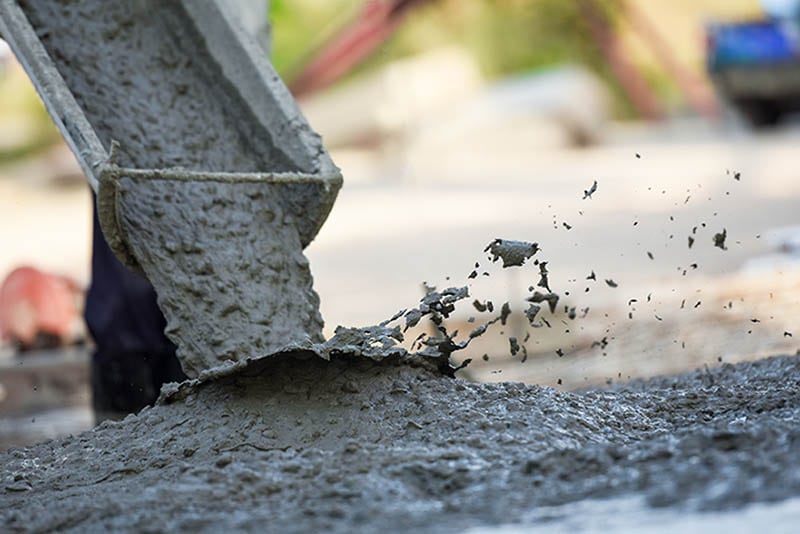
Most homes and buildings have concrete as the base foundation for support and overall structure. Concrete is an excellent choice for almost any structure or foundation because it’s affordable, strong, and easy to work with. There are many different types of concrete that you can use for your project, each with their own unique characteristics and benefits. In this post, we will discuss some of the most common types of concrete that you can use in your future cement projects. Read on to learn more.

The 8 Types of Concrete
1. Reinforced Concrete
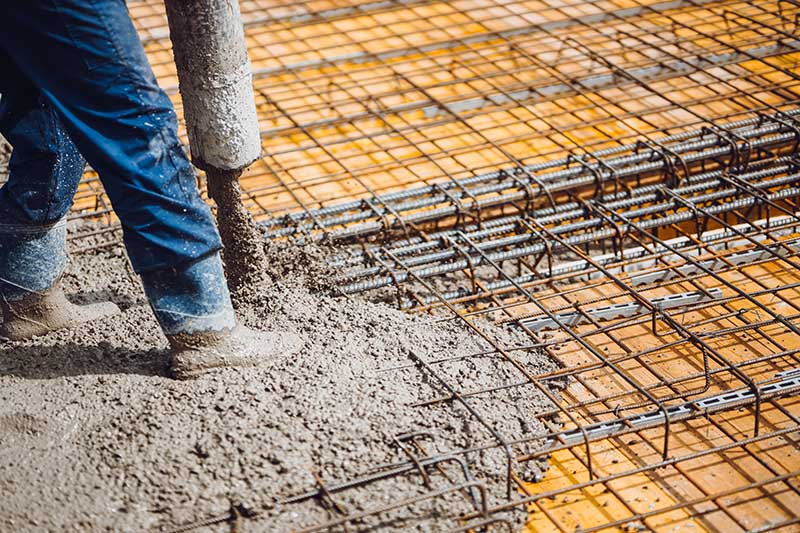
Reinforced concrete is a type of concrete that includes an additive or “reinforcing agent” to make the concrete stronger and less likely to crack or break. Some common reinforcing agents for concrete are steel, fiberglass, and polypropylene.
Steel is the most commonly used reinforcing agent for cement projects, and it’s the best choice for the majority of the cement projects that you will work with. You often see these thick steel barbs in the middle of concrete slabs when it’s being poured. Steel is strong, durable, and inexpensive, making it an excellent addition to your concrete. Steel is usually used as a reinforcing agent for foundational structures such as homes, commercial buildings, swimming pools, tiered parking garages, and public bridges.
Fiberglass and polypropylene are also great choices, but they are often more expensive than steel. Reinforced concrete is suitable for almost any cement project, but it’s especially good for areas that need to be very strong, such as a driveway. This type of concrete is excellent for high-traffic areas, such as driveways and sidewalks, because it’s very durable and long-lasting.
- Creates a solid bond
- Holds up in tough weather
- Lasts a long time
- Usually requires professionals
- Complex installation process
- Usually requires building codes licenses
2. Plain (Traditional) Concrete
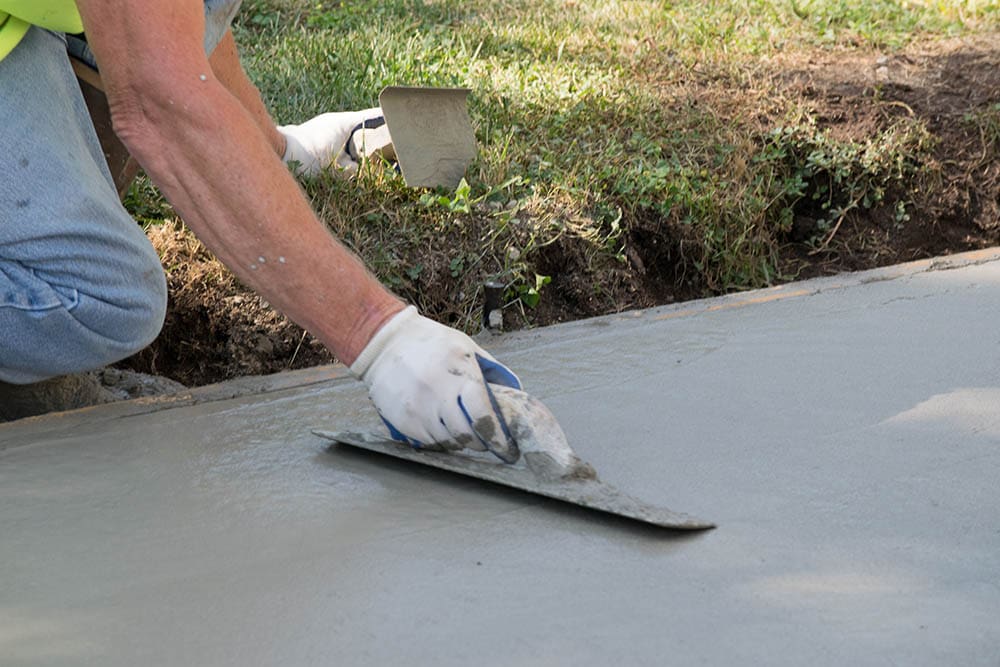
Plain concrete, also known as ordinary concrete, is the most basic type of concrete that you can use in your project. This type of concrete has only cement and water mixed together, and it has no additives or reinforcements added to it. Plain concrete is great for many projects, but it’s not suitable for use in areas that need to be very strong or durable, such as a driveway. Plain concrete is not as strong as reinforced and other types of concrete, and it can easily break or crack if it is used in high-traffic areas.
Plain concrete is a great option for small projects, such as a walkway or a flower bed, or for setting posts in the ground. This type of concrete is very easy to make, and it’s very inexpensive. It’s also very simple to use, which makes it a great choice for beginners. Overall, plain concrete is a great option for small, simple projects around your home.
- Easy to install
- Comes in ready-mix formulas
- May require professionals
- Inexpensive installation
- Not as strong or durable as other forms of concrete
3. Concrete with Fly Ash
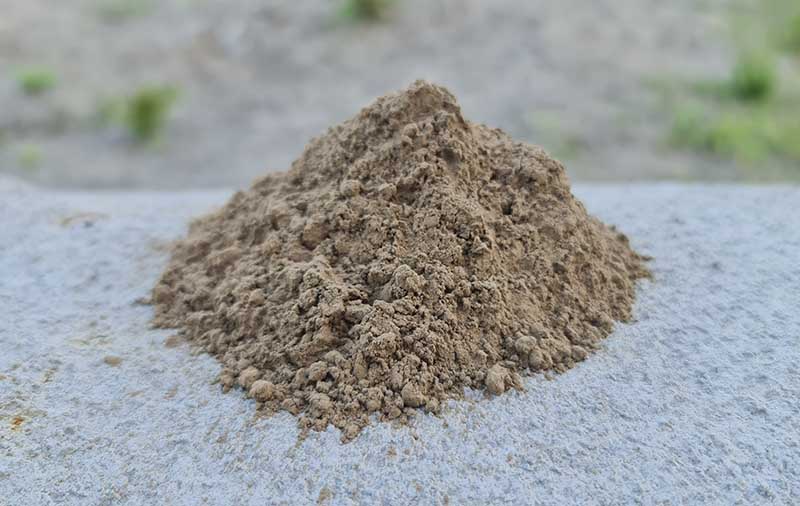
Fly ash is a by-product of burning coal to generate electricity, and it can be added to concrete to make it more durable and less likely to crack or break. Fly ash concrete is a great option for areas that see a lot of traffic, such as a driveway. This type of concrete is very durable, and it is less likely to crack or break than ordinary concrete.
Fly ash concrete is also a great choice for areas that are susceptible to freezing and thawing, such as a walkway. This concrete is less porous than ordinary concrete, which makes it less likely to freeze and break if there is a freeze and thaw cycle in your area.
It’s a great option for almost any cement project, but it’s especially good for areas that need to be very durable. Overall, it’s a good choice for large projects.
- Durable construction option
- Can be DIY installed
- Can be expensive
- Can be difficult to work with
4. Limestone Concrete

Limestone concrete is ordinary concrete with limestone added to it. Limestone is actually a very common additive to concrete (and other building materials), and it helps the concrete become stronger and more durable. It’s a great choice for many cement projects, but it’s especially good for areas that are very wet, such as a walkway or patio near a body of water or in an area that receives a lot of rain.
Adding limestone to the concrete makes it less porous, which means water will not travel through the concrete easily. Limestone concrete is a good choice for high-traffic areas because it’s very durable.
- Easy to purchase
- Simple installation
- Good for high-traffic areas
- Good for wet-prone areas
- Expensive material
5. Calcium Concrete

Calcium concrete is ordinary concrete with calcium added to it. This type of concrete is very similar to limestone concrete, and it’s very often used in conjunction with limestone concrete. Calcium can help the concrete withstand freeze-and-thaw cycles, making it a good option for areas that have a vast temperature range.
Calcium also helps the concrete resist water, which makes it a good option for areas that are very wet, for example, near a body of water or areas that receive a lot of rainfall. Overall, it’s a good choice for many different types of cement projects.
- Easy to install
- Great for DIY installs
- Good for wet-prone & cold temperature areas
- Can be pricey
6. Polymer Concrete
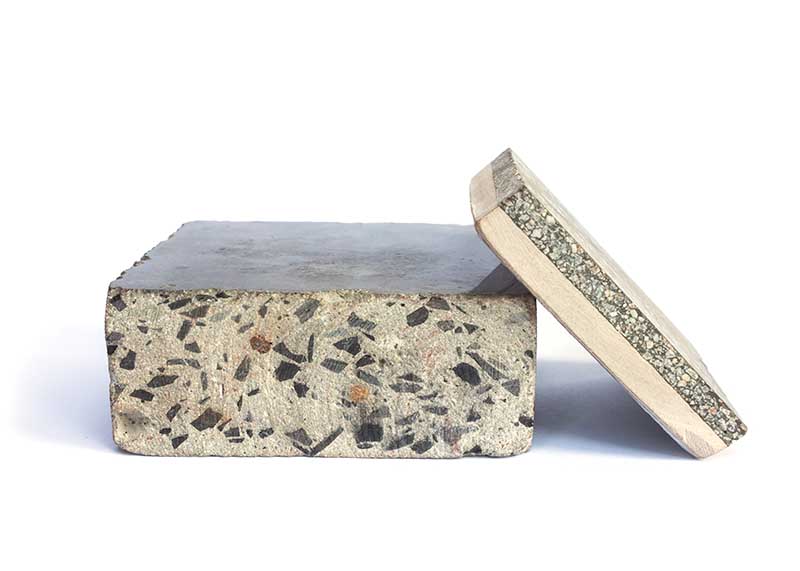
Polymer concrete will bond aggregates such as rocks, stones, and other sediment materials with polymer cement as opposed to conventional concrete. This type of concrete can be used to reduce the volume of aggregate voids, which are spaces or air pockets in the concrete. The aggregates are then graded and mixed according to their density.
Polymer concrete comes in different types:
- Polymer impregnated Concrete
- Concrete made from polymer cement
- Partially impregnated Concrete
- Creates a solid structure
- Durable material
- Reduces voids and gaps
- Can be difficult to work with
- Expensive
- May require a professional install
7. Asphalt Concrete
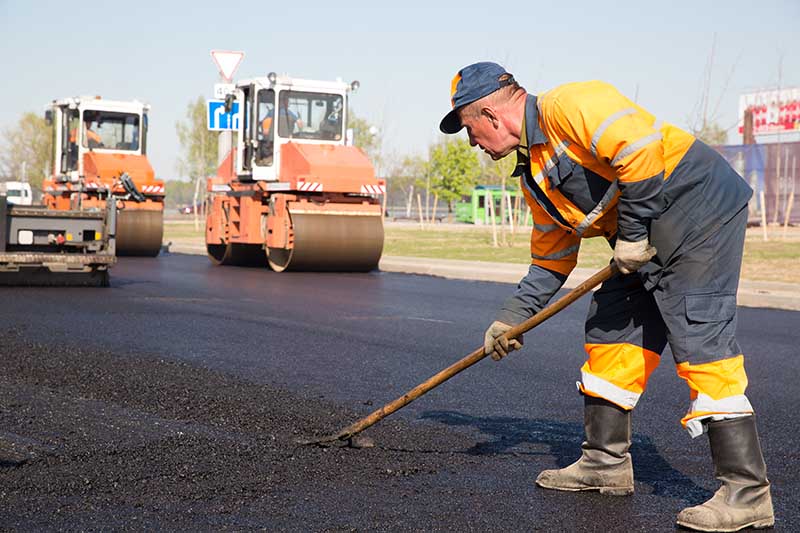
You may be more than familiar with the look and smell of asphalt concrete if you’ve ever lived in an urban area or have seen construction workers repairing holes in the street. Asphalt concrete is a mixture of asphalt and aggregates that is used to make roads, parking lots, airports, and the core of embankment dams. Asphalt concrete can also be called blacktop (due to its color), tar, pavement, or simply “asphalt” in the US.
- Great for filling small holes
- Easy to use
- Dries quickly
- Requires machinery to mix and install
- Doesn’t last long
8. Stamped Concrete
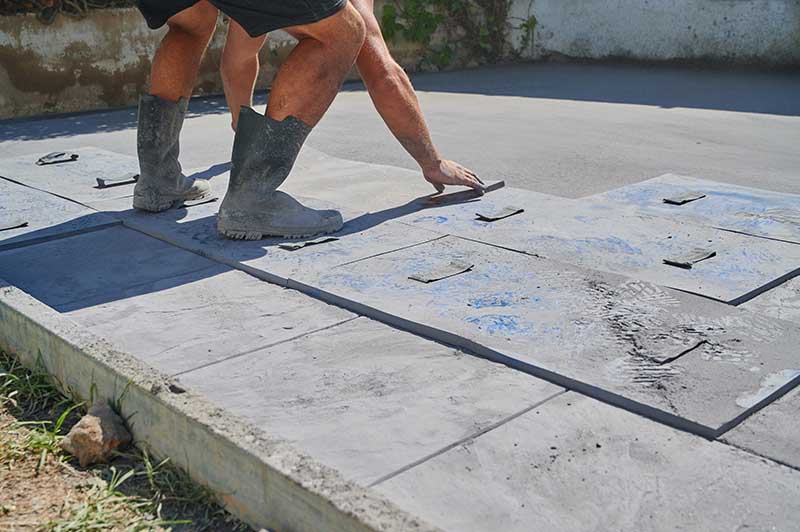
Stamped concrete can be used to create realistic patterns that look like natural stones, granites, and tiles. Professional stamping pads are used to place impressions (similar to those used to make license plates). Concrete is stamped when it is still in its original plastic state.
You can achieve a look that looks very similar to expensive natural stones by using different colors and textures. Stamped finishes can give a high-quality, artistic look. This finish is used for the construction of patios, driveways, and interior floors.
- Creates beautiful designs
- Good for architectural projects
- Perfect for creating stone patterns
- Expensive
- Can be prone to install challenges

Alternative Uses of Concrete to Give Your Property a New Look
Concrete is a versatile and inexpensive construction material that can be used to build all kinds of structures – and not just for laying foundations. It’s also an ideal material for updating or transforming almost any property, whether it’s a house, commercial building, or another kind of structure. If you’re looking to transform your home or add a new space, concrete can help you make it happen. Here are some alternative uses of concrete that you can use to give your property a small or large makeover.
Drywall Anchoring
Drywall is the most common construction material used in the US. But unlike concrete, drywall is not built to withstand the elements or long-term use – plus it’s more ideal for indoor use. This is why many homeowners choose to anchor drywall, especially when it comes to hanging heavier items like TVs or shelves.
While it is possible to use screw-in push anchors that come with the drywall, concrete-based anchors are a much more durable and reliable option. When choosing which type of drywall anchor to use, make sure to consult the building code offices for your area. You’ll also need to know the weight of the items you plan to hang and the stud location since the anchors will need to go into a stud.
Awnings and Canopies
Awnings and canopies are great additions to any property, and they are especially useful for shading windows and doors during the hot and sunny summer months. For a DIY awning, all you need to do is pour a simple concrete slab and attach an awning frame to it.
A canopy is a great way to add shade to outdoor living spaces, like patios and decks. This is especially important if you live in a sunny climate or have little shade in your yard from trees. And for a more durable and sturdier canopy, you can pour a thick concrete slab and build a frame on top of it.
Stairs and Walkways
If your property has a steep driveway or walkway, you will want to create a smoother and more accessible path with concrete. This is an ideal use for concrete because it is strong enough to withstand the weight of vehicles and heavy foot traffic without cracking or breaking.
You can create a walkway or staircase with concrete by pouring a thick slab or by building a “cobbled” walkway, which is made from smaller, interlocking concrete pavers. For a path that is wheelchair-accessible and meets ADA (Americans with Disabilities Act) standards, you can use a “curb ramp” design. The curb ramp is a slanted concrete walkway that is ADA-compliant and serves as an easy transition from the street to the sidewalk.
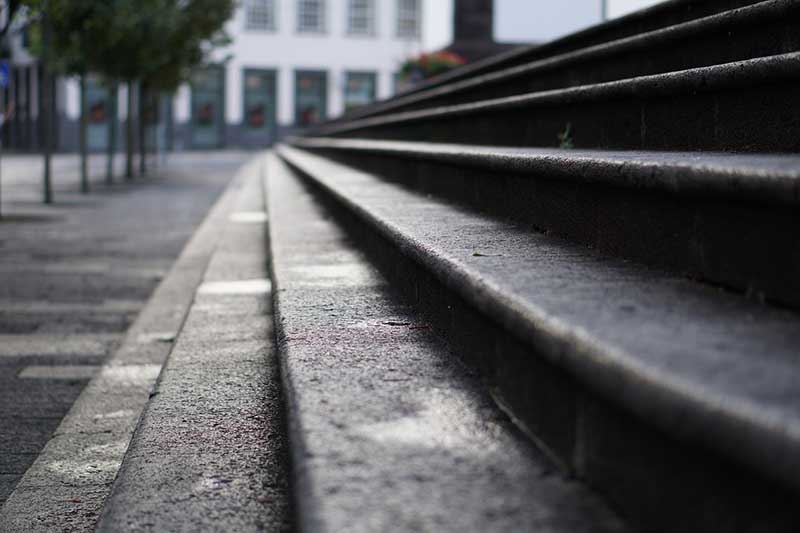
Vertical Gardens
Vertical gardens are a great way to save space if you prefer to grow your own produce. It’s also a way to add a modern, architectural flair to your home while also growing some fresh herbs and organic plants. If you’re looking to bring more green, life, and color to your home, consider building a vertical garden with concrete and other natural materials, like cinder blocks or wooden boards.
If you want to enhance the design of your vertical garden, use colored concrete to create an interesting and eye-catching design. You can also build a vertical garden with cinder blocks, which are a great choice for outdoor vertical gardens. Cinder blocks are durable, and they are naturally porous, so they’re a good material for holding a garden with a thirsty root system.
Colored Walls and Ceiling Shapes
Depending on your taste and preferred design aesthetic, you can use concrete to add color to walls and ceilings. This is possible with concrete paint, which is an easy-to-apply coating that dries within about 24 hours and lasts for years. Ceiling shapes made from concrete can help you transform the look of an otherwise boring and flat space.
With concrete paint, you can add color to your walls and create an interesting texture that makes your room stand out. You can also use concrete paint to create designs on your wall, like a pattern or geometric shapes.
Concrete Floors
If you want to build a unique floor with a modern or industrial style, you can pour concrete floors and add decorative elements, like a colored border, on top of the slab. You can also use concrete to build a floor that has to withstand heavy foot traffic, like a commercial floor in a restaurant or store. For a stylish commercial floor, mix decorative aggregates, like crushed tile, into the concrete and create an interesting texture.
Another option is to use a concrete overlay floor, which is a thin layer of concrete applied over an existing floor, like a wood or tile floor. Depending on your flooring choice, you may be able to pour concrete right over the top of your existing floor and create a seamless, modern look.

Wrapping Things Up
Concrete is a great building material, but it can also be used for so much more. When it comes to selecting the right concrete for your cement project, there are many different types to choose from. You can use concrete to give your property a new look and bring new life to boring and bland spaces.
When choosing concrete for your project, make sure you select a type that is appropriate for the job. There are many different types of concrete available, each with their own unique characteristics and benefits. By selecting the right concrete, you’re sure to have great results regardless of the project type.
Featured Image Credit: Bannafarsai_Stock, Shutterstock
Contents
